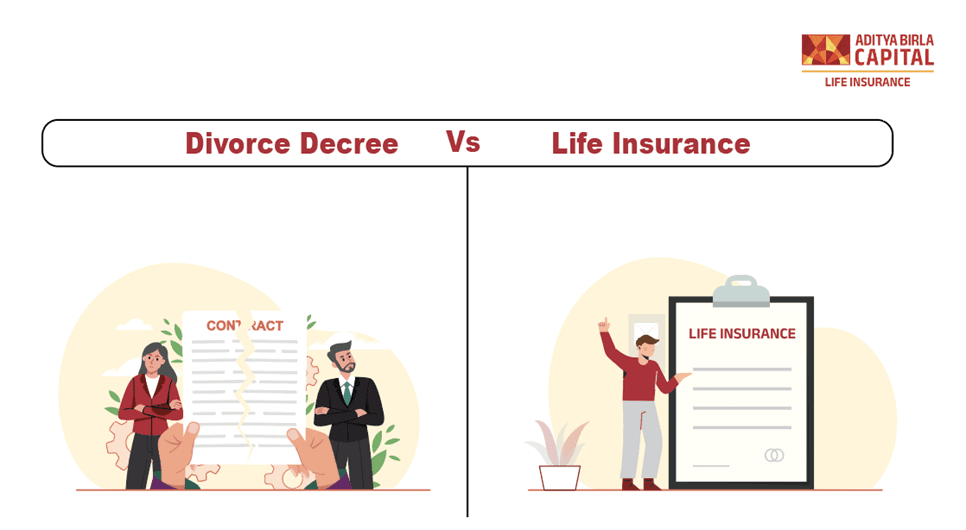Aditya Birla Sun Life Insurance Company Limited
Life Insurance Retirement

Plan Smarter, Live Better!

Thank you for your details. We will reach out to you shortly.

Currently we are facing some issue. Please try after sometime.


- Table of Contents
According to PGIM India MF’s retirement survey, 51% of the respondents lack financial planning for their retirement. The survey states that most urban Indians are saving and investing less - and they spend nearly 59% of their income on living expenditures. Because of this, they are worried about their life after retirement.
The findings of the survey clearly show that retirement planning is lacking, despite various experts stressing its importance repeatedly. Many people let this slip down their priority list, and sometimes they even ignore it altogether. This is largely due to a lack of understanding.
Proper retirement planning is crucial if you wish to maintain your current lifestyle even after you stop earning. You might want to retire sooner than the norm. And, you surely don’t want to be dependent on your children or other family members for money.
To cover all your expenses, from paying the bills to dealing with emergencies, you need a steady source of income during your retirement phase. The goal is to remain independent, give proper care to your spouse, and live a happy, healthy life. So, the sooner you start planning for your future, the better. Here’s where retirement plans come in - they will take care of all your retirement needs, so you can relax and enjoy your post-retirement life.
What is a retirement plan? How does it work? - All of these questions and more will be discussed in this article.
Let’s dive right in!
What Is A Retirement Plan?
A retirement plan is a type of life insurance plan that is specifically designed to take care of all of your retirement needs. Despite the rising costs of living and inflation, it can help you meet your living expenses.
A retirement plan can provide you with a regular income after retirement, or a lump sum amount at the time of retirement.
What Is The Purpose Of A Retirement Plan?
Our life goal is to accumulate enough wealth so that we can live comfortably without relying on anyone, especially after retirement.
Here are some of the reasons why we believe it is crucial to have a retirement plan -
Inflation And Expenses Are On The Rise
Retirement means you stop earning, but expenses continue to rise due to inflation, increasing medical expenses caused by age-related diseases. To top it off, you also need to pay for monthly expenses such as grocery bills, utility bills, etc.
For Early Retirement
Earlier, the average life expectancy was 75 years, and most people retired at 60-65 years of age. Therefore, retirement planning was needed only for 10 to 15 years, which was quite feasible. Nowadays, people are willing to retire earlier, for instance when they are 50 to 55 years old, and that calls for effective financial planning.
Life Expectancy Has Increased
he quality of life has improved due to advances in medical science, contributing to an increase in life expectancy. As per the National Health Profile 2019, life expectancy in India has increased from 49.7 years in 1970-75 to 68.7 years in 2012-16. And, this UN report says that this number will rise further to 75 by 2050 when many of us will be nearing retirement.
Generally, the retirement phase ranges from 20-30 years from age 50 to 80. This means that, without adjusting for inflation, post-retirement needs will now require 2-3X more money than what our parents needed. If you fail to consider this aspect, you will most likely be left with very little or no money after retirement. So, you won't be able to relish the retirement you had envisioned.
This is where retirement plans come into play. Let's take a look at the types of retirement plans available in the market today.
Types Of Retirement Plans
Generally, retirement plans are of three types -
General Annuity Plan
How does it work?
- You need to pay the premiums for a specific period, known as the accumulation period. The premiums you invest will get accumulated into a fund which will be converted into an annuity, i.e., a steady stream of income.
- At the time of buying the policy, the insurer will determine an annuity rate. Based on this rate, the annuity payouts will be determined by the insurance company.
- You will start receiving the annuity payouts based on the customization options you choose under the policy.
Benefit - Among all the options available, this is the most straightforward, as accumulation and annuity are integrated.
Drawback - Since you will receive your payout decades later, the annuity rate may be lower than current market rates.
Note: Annuity payouts are calculated based on your total premiums excluding taxes%.
Example: Mahath, a 30-year-old CA, purchases a general annuity plan and he intends to retire by the time he reaches the age of 50. He chooses the premium payment term to be 20 years. After the premium payment term is completed, he will receive the annuity payouts for a period of 25 years.
He begins paying premiums for the plan on 10th May 2022 and keeps it going until 10th May 2041. He will start receiving the annuity payouts from 10th May 2042.
The premium to be paid annually = Rs 1,00,000 (without taxes)
In this case, the total premium = Rs.1,00,000 x 25= Rs 25,00,000
Let’s assume the annuity rate determined by the insurer in his case is 6%.
Thus, the payout he will receive post-retirement will be = 6% of Rs. 25 lakhs = Rs. 1,50,000
Therefore, Mahath will receive Rs. 1,50,000 every year from 10th May 2042 till 10th May 2066.
Single-Premium Annuity Plan
This is a type of life insurance plan that you can purchase when you near retirement. You need to invest a lump sum, say the savings you've built up for retirement or a large retirement benefit from your company, in the plan. In return, you’ll receive a steady income post-retirement for a certain period of time, which can even be extended for your entire life.
When you purchase an annuity plan, the annuity amount is calculated based on the annuity rate determined by the insurer at the time of policy purchase. This rate will remain the same throughout your payout period.
How Does It Work?
- In contrast to general annuity plans, single-premium plans don't accumulate your money over time. Under this plan, you invest a lump sum that you have accumulated from any means to pay a single large payment. The invested money may be your retirement benefits from your employer, proceeds from ULIP@ or mutual fund investment, etc.
- Your insurance company converts this invested amount into an annuity that is paid to you according to the annuity rate.
- The income you receive during your retirement is paid according to the customisations you choose while buying the plan.
Benefit - It is the most convenient and efficient retirement plan out there in the market since you can invest your lump sum savings and receive retirement income at the right time.
Note: Your annuity amount is calculated based on the premiums you pay, excluding taxes.
Example: Kavya is a 49-year-old MNC employee. She intends to retire at the age of 50. To ensure a financially secure retirement, she purchases a single premium annuity plan with a payout period of 30 years.
She receives Rs 15 lakhs as maturity proceeds from her mutual fund. So, she plans on paying the same as the plan's premium (without taxes) on 10th May 2022.
On 10th May 2023, she will begin receiving her annuity, since the payout period begins after a year and will last for the next 30 years.
Let’s assume the annuity rate determined is 6%.
Thus, the payout she will get after retirement = 6% of Rs. 15,00,000 = Rs. 90,000
Thus, Kavya will receive Rs. 90,000 annually from 10th May 2023 till 10th May 2052 under her single premium annuity plan. Pension Accumulation Plan The idea behind this plan is to invest your savings to build a large nest egg for retirement. You can invest in such a plan early in life and carry on until retirement.
As opposed to the first two plans, the pension accumulation plan allows you to accumulate only wealth. Once you retire, this plan will pay you a lump sum that will cover all of your retirement-related expenses.
Pension Accumulation Plans Are Of Two Types:
Unit-Linked Pension Accumulation Plan The premiums paid by you are invested in the stock market and your returns are based on the performance of the market. So, these returns may vary, depending on market fluctuations.
Non-Linked Pension Accumulation Plan A non-linked pension accumulation plan gives you a fixed amount of money when your policy matures in exchange for the premiums you pay.
You need to note that the maturity amount of a pension accumulation plan must be used according to certain rules set by the Insurance Regulatory Development Authority of India (IRDAI) as this plan is exclusively designed for retirement.
So, as per the rules, you can -
- Withdraw 60% of the accumulated funds (also known as a "commutation"), and invest the rest of the amount in a single-premium annuity.
- Invest 100% of the corpus net of withdrawals, if any, in a single-premium annuity plan provided by the same insurer.
- Invest 50% of the corpus net of withdrawals, if any, in a single-premium annuity with the same insurer and the rest of the amount (50%) in a single-premium annuity plan with a different insurer.
Due to the fact that this plan offers only accumulation, it works in the same way as other conventional accumulation tools, such as ULIPs@, mutual funds, NPS, etc. To determine if this plan would be an appropriate investment, its benefits, returns, and withdrawal limits should always be compared with those of conventional accumulation tools.
Example: Raj, a 40-year-old, intends to retire at the age of 60 and wants to invest in a unit-linked pension accumulation plan. He wishes to build his wealth for his retirement life.
The policy duration is 20 years and he needs to pay an annual premium of Rs 2.5 lakhs.
Let's say the NAV (Net Asset Value) on the date of his investment is Rs. 700.
Applied charges = Rs 5000.
Total number of units = (money invested-charges)/NAV = 2,45,000/700 = 350
Accumulated Fund Value
Say Raj accumulates 6000 units additionally over the course of 20 years.
The total units he will receive at the time of maturity = 6000 + 350 = 6350
Let's say the NAV on the maturity date is Rs. 800
Therefore, the total fund value = NAV x Number of Units = Rs. (800 x 6350) = Rs. 50,80,000
Thus, Raj will receive Rs. 50,80,000 as maturity benefit.
So, these are the types of retirement plans. Now, let’s take a look at the death benefit and tax% benefits of these plans -
Death Benefit
Your appointed nominee will receive a death benefit in the event of your untimely demise.
Death Benefit in Single-Premium and General Annuity Plans
- The premiums accumulated by these plans are returned to your nominee in the event of your untimely demise. This amount may also be referred to as return of purchase price by insurers.
- Single-life annuity plan - Here, you are the only policyholder and your nominee will receive the purchase price in case you pass away.
- Joint life annuity plan - Here, your spouse is also included in the policy. As a result, your nominee will receive the purchase price upon your and your spouse's deaths.
- Depending on the plan, the return of premium the insurer will pay can range from 50% to 110% of the premiums paid under the plan.
Death Benefit in Pension Accumulation Plans
- Unit-linked plans- If you pass away during the policy period, your nominee receives the higher value of the fund calculated on your date of passing away or 105% of the total premiums paid.
- Non-linked plans - If you pass away during the policy period, your nominee gets the higher of the total premiums paid + bonuses (if any), or 105% of the total premiums paid.
Note: The amount may vary across products and insurers.
Tax Benefits%
Tax% Regulations For Single-Premium and General Annuity Plans
- The premiums you pay are exempted from tax% under Section 80C.
- Annuity payouts are treated as income, so they are subject to tax%.
Tax% Regulations For Pension Accumulation Plans
- The premiums you pay are exempted from tax% under Section 80C.
- The amount that you can partially withdraw from the maturity amount will be exempted from tax% under Section 10(10A).
Summing up!
You need to determine your financial goals and needs before signing up for a retirement plan. You can opt for a pension accumulation plan if you have a few years left until retirement and want to accumulate a large amount. In contrast, if you want to invest early and wish to get regular payouts, you should go for the general annuity plan. And, if you are close to retirement and can invest a large amount to get a retirement income, a single-premium annuity plan may be the best fit.
Every individual's needs are unique. Hence, it is important that you understand the nuances of each plan and choose the one that is right for you.
Thank you for your details. We will reach out shortly.
Thanks for reaching out. Currently we are facing some issue.
Buy ₹1 Crore Term Insurance at Just ₹465/month*
ABSLI Super Term Plan
Term plan designed for salaried individual.
3 Plan Options
Health Management Service Worth ₹46000
100% return of premium
Life Cover
₹1 crore
Premium:
₹465/month*
Most Popular Calculator
Buy ₹1 Crore Term Insurance at just @ ₹576/month*
%Tax benefits are subject to changes in tax laws. Kindly consult your financial advisor for more detail.
@In the Unit Linked Policy, the investment risk in the investment portfolio is borne by the Policyholder.
ADV/6/24-25/583







